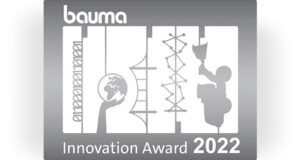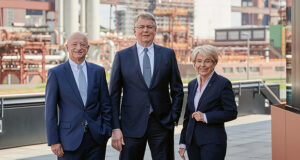With its consolidated financial statements for 2021 that have now been approved by the Supervisory Board, Essen-based STEAG GmbH, a long-established company in the energy sector, is able to confirm the upward trend that had already become apparent over the course of the year: Group sales increased to 2.77 bn €, operating income (EBIT) to 234 M €, and consolidated income after taxes to just under 308 M € (Figure 1). The lively development in the first quarter of 2022 suggests that this positive trend will also continue during the current fiscal year.
The 2021 result represents an important achievement along STEAG’s chosen path of fundamental transformation: “All relevant KPIs for 2021 are not only significantly above the previous year, but also exceed the original budgeted figures,” says Andreas Reichel, Chairman of the STEAG board of management, in summarizing the year-end result.
The reduction of the workforce that had already been resolved in connection with the phasing-out of coal-fired power generation in Germany that has been enshrined in law since 2020, is also progressing according to plan. This envisages a total of around 1,000 jobs being cut in Germany. In 2021, the average number of employees in the Group fell by just under 400 to around 5,700.
Group sales increased by 37.1 % in the past fiscal year to just under 2.8 bn €, as against 2.0 bn € in 2020. At the same time, the operating result before interest and taxes (EBIT) as defined by STEAG improved by 20 % to 234 M €, compared with 195.0 M € in the previous year. Consolidated income after taxes, which had still been negative at −170.3 M € in 2020, improved by 477.9 M € to 307.6 M €.
This significant improvement in net income is also attributable to one-off effects which, unlike in 2020, had a positive impact in the past fiscal year. These particularly include the contractual agreement with the Austrian energy group EVN on withdrawing from the company operating Walsum 10, the hard coal-fired power plant in Duisburg that went into operationas recently as in 2013, as well as STEAG’s successful participation in the decommissioning auctions for hard coal-fired power plants in line with the Coal-fired Power Generation Termination Act (KVBG).
However, given the currently tense situation on the energy markets, it has not yet been decided whether the successfully bid power plant units in Bergkamen, North-Rhine Westphalia, and Völklingen-Fenne, Saarland, will in fact be shut down permanently on 31st October 2022, as planned. “The political vote on this has yet to take place, and the Federal Network Agency has also not yet issued a final statement on whether our plants are systemically relevant,” Ralf Schiele, STEAG’s director with responsibility for Market and Technology, explains.
At 351.1 M €, STEAG’s total liquidity in fiscal 2021 was around 150 M € below the previous year (507.6 M €). “The background to this is that, in accordance with the financing agreement signed with the banks in 2021, we have repaid a considerable amount of liabilities,” says Ralf Schmitz, Chief Finance Officer and Chief Transformation Officer at STEAG GmbH.
In terms of the 2021 year-end result, it is particularly pleasing that STEAG’s appreciable upward trend is being driven by both sectors of the company. “Not only the coal business, but also STEAG’s future growth business benefited from the high electricity prices and significantly exceeded the original EBIT planning,” Schiele emphasizes. The growth in earnings in large-scale battery storage systems, in the distributed facilities segment and in the waste-to-energy business (thermal waste disposal) was particularly pleasing, he said, with the growth business already contributing more than 100 M € to the Group’s operating result before interest and taxes (EBIT) in the past fiscal year.
Since the third quarter of 2021, STEAG’s long-term stabilization has particularly been bolstered by the change in circumstances on the energy markets. The persistently high level of natural gas prices has led to a marked improvement in the profitability of STEAG’s hard coal-fired power plants since then; increased generation of electricity compared with 2020 and higher electricity prices had a positive impact on the development of earnings. “In view of the current global political state of affairs, we expect this exceptional situation on the energy markets to continue for the time being,” Schiele stresses.
STEAG is now using the unexpectedly positive development of its hard coal sector to push ahead with its own transformation at full speed. “The goal is to restructure the company so that the coal business and the renewables-driven growth business can ultimately be clearly separated but continue to operate under the same STEAG roof,” Schmitz explains, outlining the Group remodeling project known internally as “Sunrise”.
In principle, he says, the division of the company has already been decided and agreed with all stakeholders involved in the process, these being the municipal shareholders, the IG BCE trade union, the employee representatives and STEAG’s Supervisory Board, as well as STEAG’s banks and those of its parent company, KSBG. “The goal has been clearly defined by mutual agreement,” says Schmitz. “The final decision on continuing down this path is expected this coming fall.”
With the division of the company due to take effect at the beginning of 2023, STEAG is creating the conditions for further strategic options. “We want to ensure the best possible outlook for the two STEAG business sectors, Green and Black, enabling us to live up to our responsibility towards our municipal owners, but more than anything else towards our employees,” Reichel emphasizes.
In 2021, the municipal shareholders decided to end their involvement in STEAG. “It is now the task of the STEAG management to enable the owners to sell their shares on reasonable terms,” Reichel explains. “In view of the recent positive economic development, STEAG’s power plants have gained in value. The chances of the two-sector company being sold as a whole have recently increased significantly,” he underlines, while continuing that another conceivable option would be for the hard coal sector to be transferred to a foundation, as was suggested by Berlin’s “traffic-light” coalition in its coalition agreement last fall. “A foundation solution could also be attractive from an investor’s point of view,” Reichel points out. “It would constitute a course of action that would bring power plants together on the market in the interests of ensuring security of supply, while also organizing the decommissioning of coal-fired power plants and their crews in the medium term.”
STEAG stands ready to contribute to security of supply in the current energy crisis: Having actually been planned for this spring, the retrofit of the Herne 4 hard-coal unit has been postponed. However, the company is emphatic that this decision does not mean a fundamental renunciation of the coal phase-out. “There is absolutely no doubt that we as a company and as an economy as a whole will be phasing out coal. The currently altered situation due to Russia’s invasion of Ukraine does nothing to change this. When it comes to the coal phase-out that has been enshrined in law since 2020, it is therefore simply a question of when, not whether, and of the contribution that coal can make to ensuring security of supply in Germany up until then,” Reichel explains.
For fiscal 2022, the STEAG management expects all relevant KPIs to improve in relation to the 2021 year-end figures, thus continuing the company’s upward trend. “However, with the situation on the energy markets remaining unclear, sales and earnings are difficult to predict with any degree of certainty at present,” Schmitz concludes. (STEAG/Si.)


